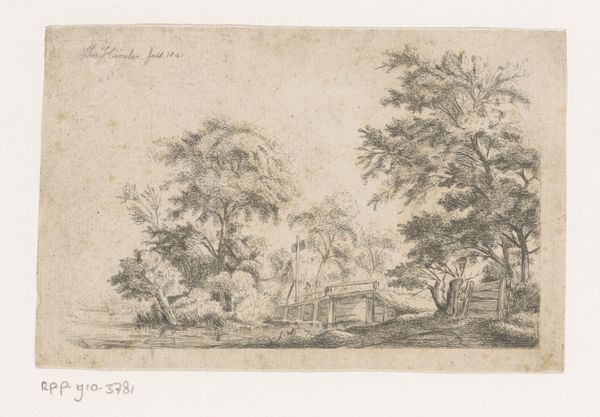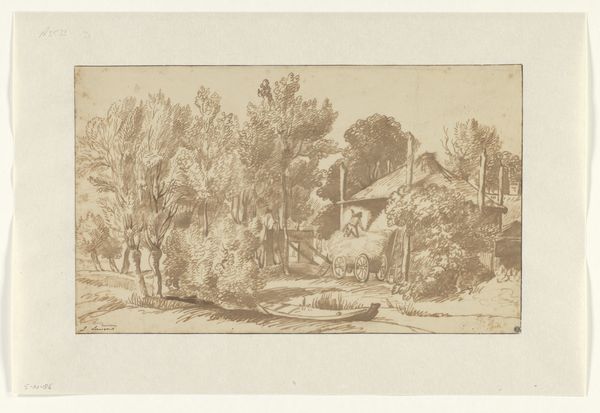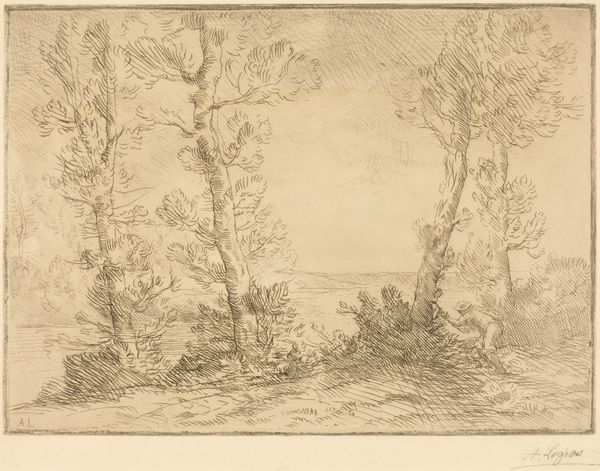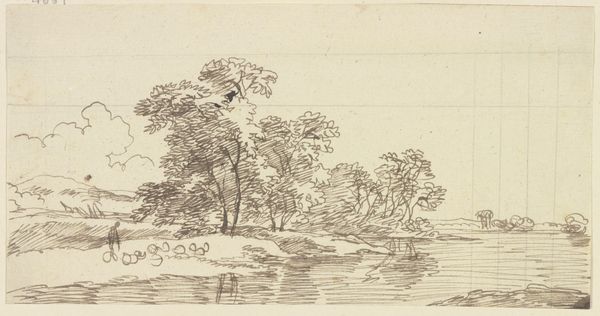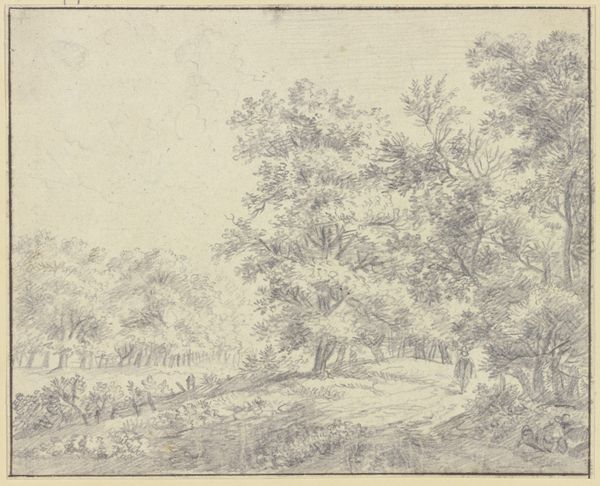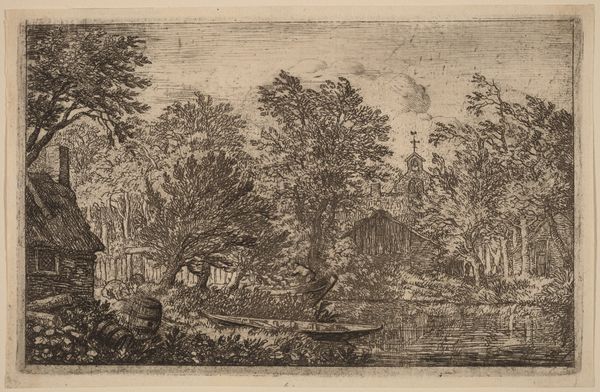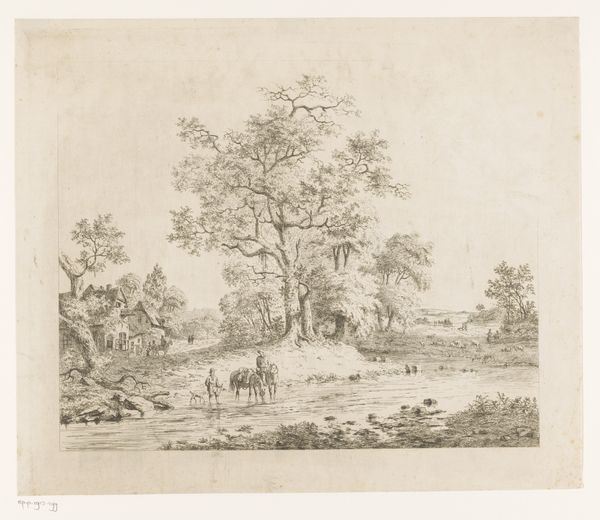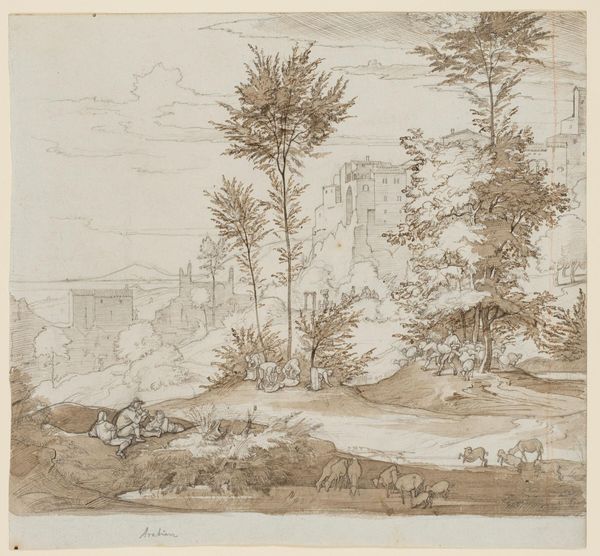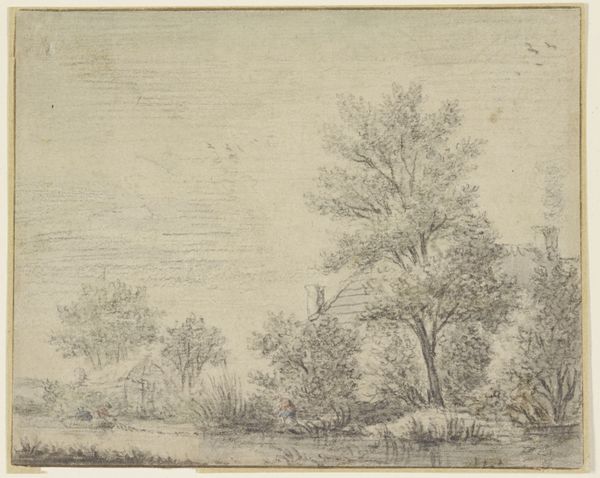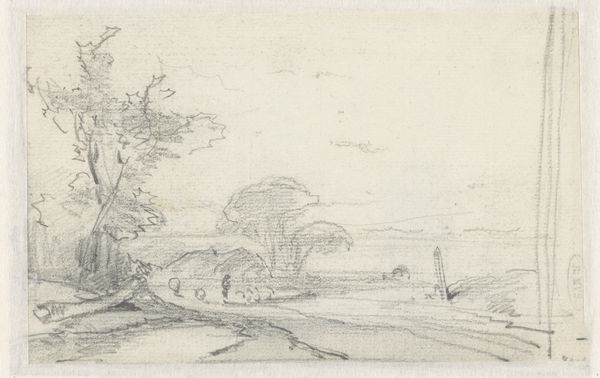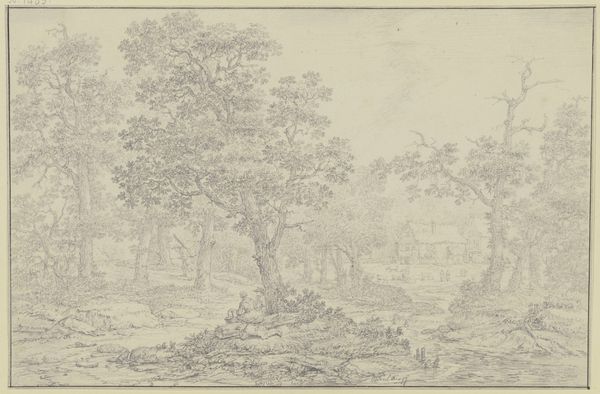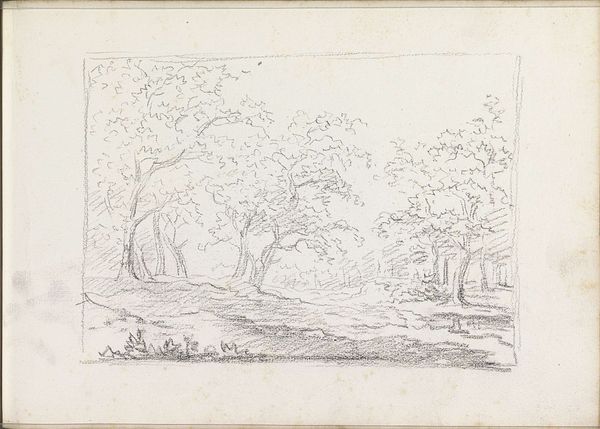
drawing, paper, ink
#
drawing
#
baroque
#
dutch-golden-age
#
pencil sketch
#
landscape
#
etching
#
paper
#
ink
#
realism
Dimensions: height 248 mm, width 370 mm
Copyright: Rijks Museum: Open Domain
Editor: So, this drawing is titled "Bosrand met schutting," which translates to something like "Edge of the Woods with Fence." It's from the 1650s or 60s, by Jan Lievens, done in ink on paper. It's deceptively simple, really; a sketch of a woodland scene. What draws your eye here? Curator: Well, precisely its apparent simplicity. The drawing highlights the material conditions of representation. Lievens, instead of focusing solely on mimetic representation, directs our attention to the very means of its production. The ink, the paper, the repetitive, almost labor-intensive strokes creating the foliage… How does the use of simple, readily available materials democratize the landscape genre, challenging the more opulent, commissioned paintings of the era? Editor: I see what you mean! It feels less like a finished "masterpiece" and more like a record of observation, maybe even a preparatory sketch. It definitely emphasizes the raw materials. But how does that translate to challenging the hierarchy, like you said? Curator: By its very accessibility, and perhaps even disposability. Ink and paper were far less costly than oils and canvas, opening the door to broader participation in artmaking and consumption. Landscape, too, moves away from allegorical or history painting, grounding itself in a visible, accessible reality, blurring the line between ‘high’ art and a more quotidian artistic practice. The presence of the fence… What could that signify? The literal materiality of enclosure and labour? Editor: That's fascinating. I hadn’t considered the fence as a representation of labor. It does change how I see it; the drawing feels more grounded, somehow. Curator: Indeed. It becomes an assertion of the working artist's engagement with their immediate environment. Editor: It’s made me rethink what ‘landscape art’ can be; less about idealized scenes and more about the real, tangible interaction with nature. Curator: Precisely. And Lievens' "Bosrand met schutting" offers a fascinating case study in how materials and processes shape artistic meaning, making it profoundly material.
Comments
No comments
Be the first to comment and join the conversation on the ultimate creative platform.
